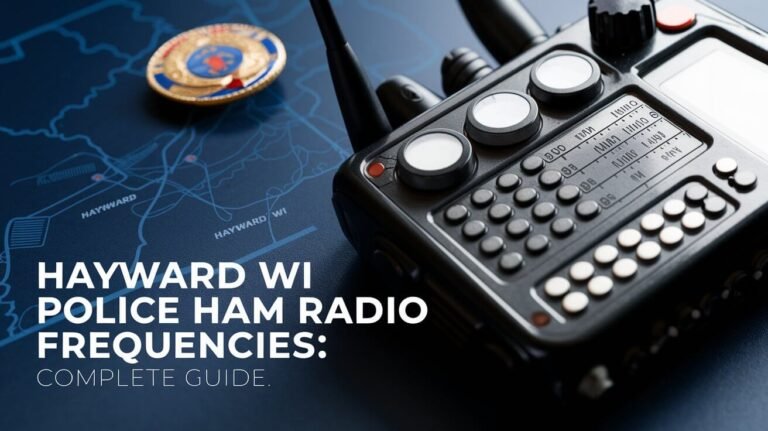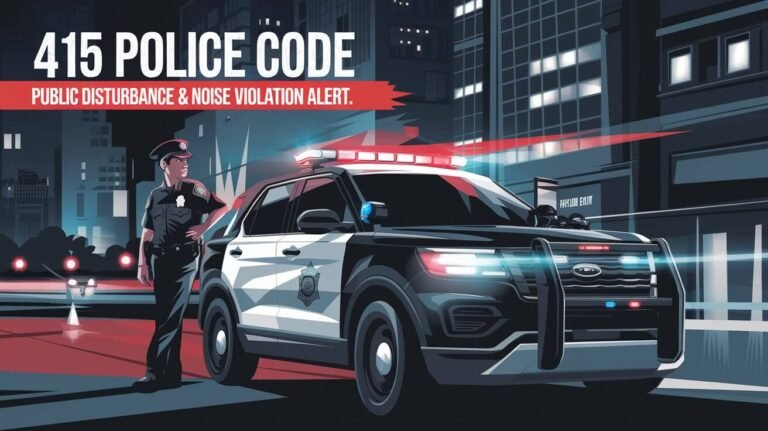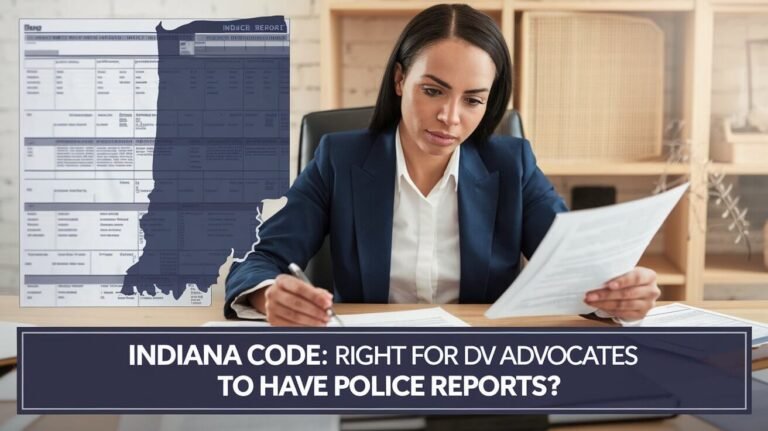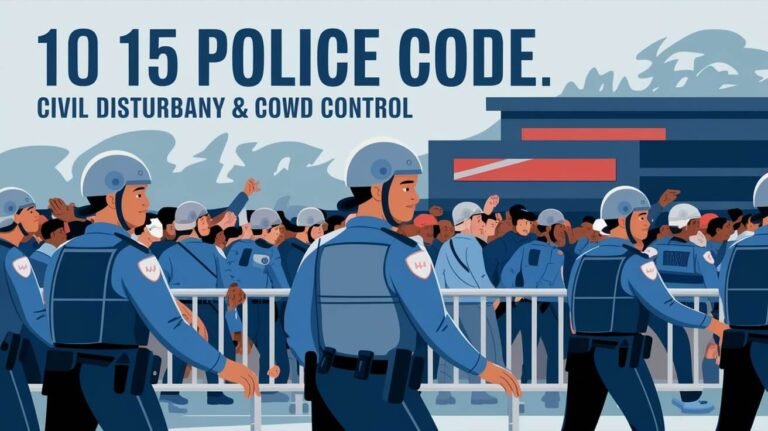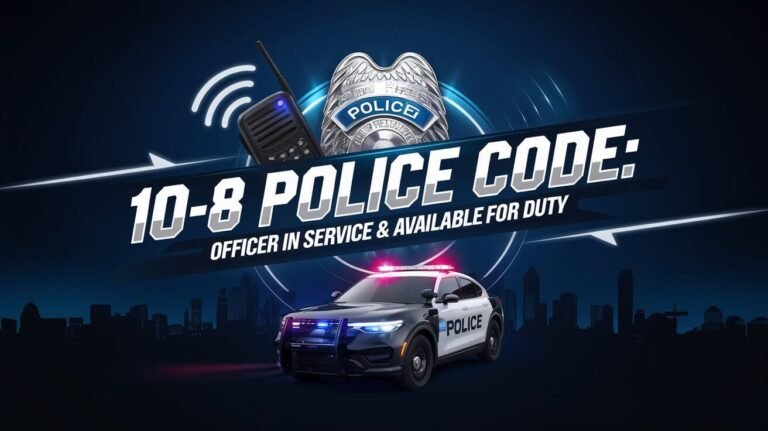10 13 Police Code: Officer Emergency & Distress Signal Alert
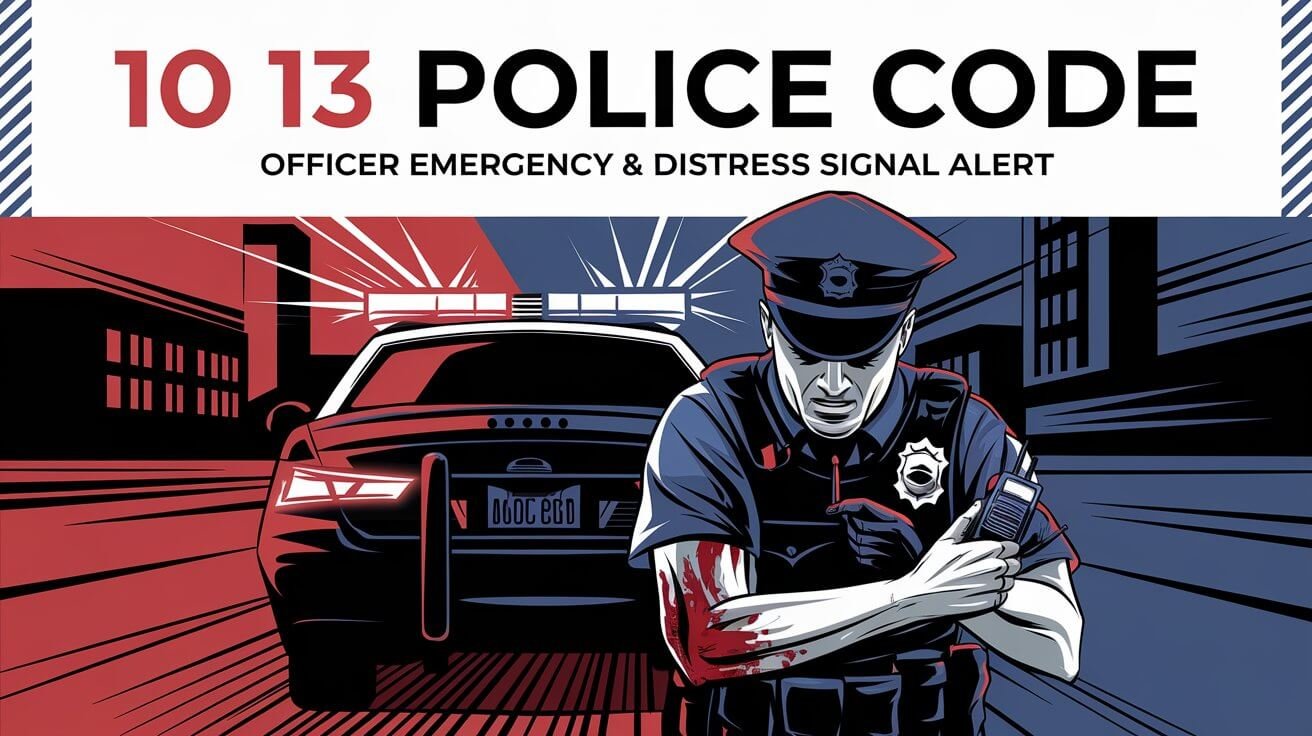
In law enforcement, effective communication is important. The “10-13” code is a vital tool for police officers. It’s a radio signal that means an officer needs help right away.
This code is part of the “ten-code” system. It’s a short and clear way for officers to tell their team and dispatch centers about urgent situations.
The 10-13 code is a key part of police communication. It lets officers quickly call for help in dangerous or life-threatening situations. Even though the code’s meaning can change slightly in different places, it always means an officer needs backup fast.
Using this code helps ensure that officers and dispatch centers respond quickly. This helps keep everyone safe, both the officers and the public they protect.
Police Radio Code Origins and Development
The need for clear, efficient communication has always been key in police work. The Association of Public-Safety Communications Officials (APCO) was key in setting standards for these codes. They started in the early 20th century. APCO’s work led to the uniform codes we use today.
Early Communication Systems
Police officers first made their own code systems to make radio talks clearer. As tech got better, these codes got more formal. The first 10-code system was suggested in the late 1930s. But, different departments had different codes, making communication hard.
APCO Standards Evolution
In the 1970s, APCO made the 10-code system better. They added more codes to make communication clearer and more consistent. Now, many police departments use the 10-code system.
Modern Implementation Methods
Today, the 10-code system is used with new tech. Many police use computer-aided dispatch systems with 10-codes. This makes communication faster and more accurate in emergencies. But, moving to plain language is slow because of safety concerns and the cost of updates.
10 13 Police Code: Core Meaning and Usage
The 10-13 police code is key in emergency talks among police. It means an “officer assistance signal” or “officer in danger.” This calls for quick help from nearby units.
An officer sends a 10-13 when they need backup fast. This could be for many reasons, like facing a dangerous person or a risky situation. The code quickly gets other officers to the scene, improving situational awareness and response.
Different places might use different codes, but 10-13’s main goal is the same. It’s to get officers to help a colleague in trouble. Codes like 10-33 for “emergency” or 11-99 for “officer needs help” serve the same purpose.
| Police Code | Meaning | Frequency of Use |
|---|---|---|
| 10-4 | Acknowledgement | One of the most frequently used OPP codes |
| 10-13 | Assist Police Officer | A common code in police communications |
| 10-31 | Sickness/Injured Person | Used for emergency medical situations |
| 10-45 | Sudden Death | Indicator of serious criminal incidents |
| 10-99 | Officer Update Your Status | Used for officers to maintain communication and safety status |
Essential Components of Police Radio Communication
Police radio communication needs strict rules for clear and efficient talk. Key parts are clear speech, standard codes, and good radio manners. Dispatch centers are key in emergency responses, like the 10-13 signal.
Radio Protocol Basics
Police officers must follow certain rules when using their radios. They should speak clearly and not use bad names. They also need to use their unit numbers for ID.
FCC rules say radios must only be used for official business. This means talking clearly and to the point.
Dispatch Center Operations
Dispatch centers are the heart of emergency response. They use systems like the Priority Dispatch System and ProQA to get important info. They then sort calls based on urgency.
Dispatchers use special tones to tell officers about the situation. This can range from needing help to citywide alerts.
Emergency Response Coordination
In emergency situations, quick coordination is key. Dispatchers make sure the right units are sent and keep officers safe. They use codes like 10-13 for weather or road info, 10-31 for crimes in progress, and 10-80 for pursuits.
| Code | Meaning |
|---|---|
| 10-1 | Signal Weak |
| 10-2 | Signal Good |
| 10-3 | Stop Transmitting |
| 10-4 | Acknowledgement (OK) |
| 10-10 | Fight in Progress |
| 10-29 | Check for Wanted |
| 10-31 | Crime in Process |
| 10-33 | Emergency |
The rules and steps in this section help with better communication. This makes emergency responses more effective.
Regional Variations in 10-Series Codes
While the U.S. tries to standardize police codes, there are many differences. It’s key to know the local codes when working in different places.
For instance, some police use 10-13 for weather reports, not just for officer help. Others use 10-33 for emergencies, 10-78 for help requests, and 11-99 for officer needs. These differences show how important it is to understand police codes and regional communication differences.
The Indiana State Police show how diverse police code use can be. In the 1920s and 1930s, they needed better ways to fight crime. They use codes like 10-0 for fatalities and 10-99 for wanted individuals.
The Indiana State Police also have a clear language for their system. Each district has a number, and units range from the Governor to the Drug Enforcement Division. This makes communication clear and standardized in emergencies and daily work.
| Code | Meaning |
|---|---|
| 10-4 | Acknowledge Message |
| 10-21 | Phone _______ |
| 10-87 | Meet the officer |
| 11-40 | Notify if Ambulance Needed |
| 11-60 | Water Leak |
Ongoing regional communication differences in 10-series police codes highlight the need for knowledge. Officers and dispatchers must know local police codes and standardized language when working in different areas. This ensures clear communication, which is vital for safety and emergency response.
Officer Safety and Emergency Response Protocols
When an officer calls a “10-13” over the radio, it means they need help fast. This call starts a chain of important steps to keep officers safe and to respond quickly. Let’s look at what these steps are.
Immediate Action Procedures
When a “10-13” call is made, units nearby rush to the scene. The dispatch center quickly gets resources ready and shares important details with officers. Officers are trained to quickly secure the area, understand the situation, and stop any threats.
Backup Request Guidelines
Asking for backup is key to keeping officers safe. Officers follow rules when they call for help, like how many units they need and how urgent it is. Dispatch centers make sure the right help arrives fast.
Scene Management Tactics
Managing the scene well is vital in risky situations. Officers learn how to control the area, work with others, and keep people safe. This includes setting up boundaries, handling crowds, and giving medical help when needed.
Learning these safety steps, law enforcement can handle tough situations better. They stay ready and professional, keeping the community safe.
Critical Communication During High-Risk Situations
In high-risk law enforcement situations, clear and concise communication is key. It ensures officer safety and effective crisis management. Police officers use specific language and tactical radio codes to quickly share critical information.
They use “10-3” to clear the airwaves for emergency traffic. Other important codes include “10-32” for a person with a gun and “10-33” for an emergency. These codes help spread vital information fast, allowing officers to make quick decisions and work together effectively.
The use of high-risk communication, crisis management, and tactical radio usage is vital in law enforcement. By learning these communication protocols, officers can stay alert, reduce risks, and keep everyone safe.
| Code | Meaning |
|---|---|
| 10-3 | Clear the airwaves for emergency traffic |
| 10-32 | Person with a gun |
| 10-33 | Emergency |
Dispatch Center Response to 10-13 Calls
When a “10-13” call comes in, it starts a quick emergency response. Dispatchers quickly focus on these calls. They know they must act fast and effectively.
Priority Response Guidelines
Dispatchers jump into action with a 10-13 call. They find out where it is and how urgent it is. Then, they send all they can to help.
They use codes like “Code 3” to mean it’s an emergency. This means lights and sirens are on.
Resource Allocation Procedures
Dispatch centers have plans for sending help to 10-13 calls. They make sure the right people and tools are on their way. This helps keep everyone safe and the scene secure.
Multi-Agency Coordination
Often, many agencies work together on 10-13 calls. Dispatch centers help make this teamwork happen. They manage communication and make sure everyone knows what to do.
Common Radio Code Combinations
Police officers use a complex system of radio codes to talk effectively in different situations. Codes like “10-13” (officer needs assistance) have specific meanings. But, some code combinations are used often to share more detailed information. It’s key to know these patterns for quick and effective emergency responses.
A “10-13” call might be followed by a “10-20” (location) to tell the exact spot where help is needed. Other common uses include “10-4” (acknowledged) after getting important info, or asking for a “10-9” (repeat) if something was unclear. These codes help officers share important details quickly and clearly over the radio.
| Police Code | Meaning | Common Combinations |
|---|---|---|
| 10-13 | Officer needs assistance | 10-20 (location) |
| 10-4 | Message received, affirmative | After receiving critical information |
| 10-9 | Repeat message | Following unclear initial transmission |
These and other codes help officers talk about complex situations quickly and clearly. Knowing these radio communication patterns is a vital skill for law enforcement.
Digital Age Adaptations of Police Codes
Technology has changed the world a lot, including how police talk to each other. Now, many police use digital radio systems for secure and fast communication. Even with new tech, old codes like “10-13” are often used because they’re well-known and work well.
Modern Technology Integration
Technology has made police communication better. Digital police communication systems let officers send important info quickly and safely. These radio systems help police work together better and keep everyone safe.
Communication System Updates
Even though old codes are used, some police want to change to make things clearer. They’re moving to plain language to help everyone understand better. This change is to make sharing info easier, which is important in stressful situations.
The way police talk to each other is getting better with new tech. As technology keeps improving, how police communicate will change a lot. This will help make law enforcement more effective in the future.
Radio Code Compliance and Training
Using police radio codes, like the 10-13 signal, is key for law enforcement. Officers practice regularly to stay good at using these codes. They follow strict rules to keep communication clear in emergencies.
Training includes learning radio manners, how to use equipment, and practicing for real situations. Officers learn the different meanings of 10-code systems, which change by location. The 10-series codes are well-known, but their meanings can vary a lot.
Many police groups now use simple language instead of codes. This change, suggested in 2016, makes it easier for officers to communicate quickly and accurately. It helps them respond faster in emergencies.
| Police Communication Training Elements | Compliance and Enforcement |
|---|---|
| Radio Etiquette Equipment Utilization Scenario-based Exercises Mastering 10-code Systems Transitioning to Plain Language | Standardized Code Usage Consistency Across Departments Clarity During Emergencies Compliance Monitoring Ongoing Training Requirements |
Focusing on training and following radio rules, police can work better together. This makes emergency responses safer and helps protect the community.
Closing Summary
Police codes, like the 10-13 code, are very important in emergency communication and law enforcement radio protocol. They help officers and dispatch centers share critical information quickly and clearly. This makes emergency responses more efficient and effective.
Even as technology changes, the need for clear and coordinated communication in law enforcement stays the same. Using these codes correctly can save lives in emergency situations. It shows how vital they are in today’s policing.
While different places use different codes, the need for clear communication in law enforcement is constant. By sticking to these proven practices, agencies can improve emergency communication, keep officers safe, and serve the public better.

